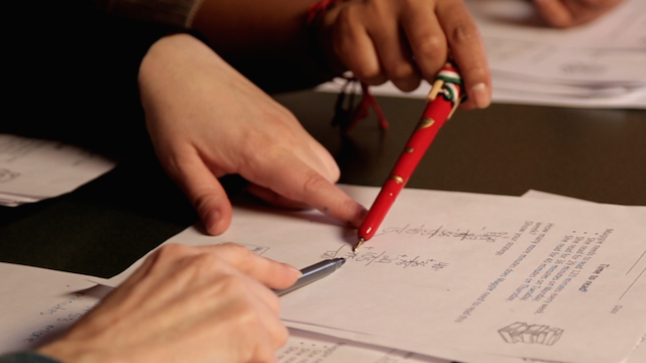Series: About the Collaborative
Flexible Thinking Useful for Children and Teachers at Innovations Schools

Coaches from the Collaborative have been working with teachers in the Innovations project for four years now, with the end goal of improving confidence and flexibility in teaching vital early math ideas. In many ways the flexibility of learning that is promoted for children has been a model for teachers and coaches as well.
“I was taught algorithms in school,” says coach Liz Avila. “There wasn’t much thought that went into the math that I did.”
Strategies such as number talks (or math talks) aim to alter this “plug-and-chug” method of problem solving. These brief, full-class discussions are centered around a single math problem or a short series of related math problems. Intended to get students thinking critically about math, teachers challenge students to come up with and explain different strategies to add flexibility when they encounter new and increasingly difficult problems.
In order to lead a successful number talk, teachers need to think deeply about the problem they’re giving to their students. So it has had the same effect on teachers. Is the problem developmentally appropriate? What solution strategies are students most likely to use? What could be a source of confusion for them? Breaking down problems and hearing varied responses from students opens up new understandings about math for the teachers.
“By anticipating student thinking, we begin to unpack the relationships that students may rely on in order to solve problems,” Avila explains. “Each time I lead a number talk, whether for students or colleagues in a coach meeting, I am struck with the amount of time and thoughtfulness number talks require.”
Avila emphasizes that number talks takes practice. Even with foresight into how students might solve the problem, number talks can be somewhat unpredictable.
“Listening to the students is a critical piece to this work,” she says. “And in the moment, this can be very challenging.”
Because student responses are guiding the lesson, teachers must be flexible. Learning to balance the goal of the lesson with the strategies that students are actually sharing is a challenging but crucial part of the process.
Teachers and coaches in the Innovations project have taken this flexible thinking to their grade-level meetings, in which they have been collaborating to develop and assess math lessons.
In a way, these grade-level meetings are like number talks for the teachers and coaches themselves. After agreeing upon a problem to give their class, teachers brainstorm strategies that students might use to solve the problem. Then they organize the strategies by complexity, using the Landscape for Learning (Number Sense, Addition, and Subtraction [pdf] and Multiplication and Division [pdf]) as a guide. Through this process, the teachers are preparing themselves to quickly determine which students are grasping the intended solution strategies and which are relying on more simple strategies.
This year teachers at Reinberg Elementary, Gale Community Academy, Jordan Elementary, and Cleveland Elementary have also generously agreed to take part in filmed grade-level meetings. These will be used as working examples to train teachers in this process. Upon completion of the filming process, the Collaborative will make these available to view.